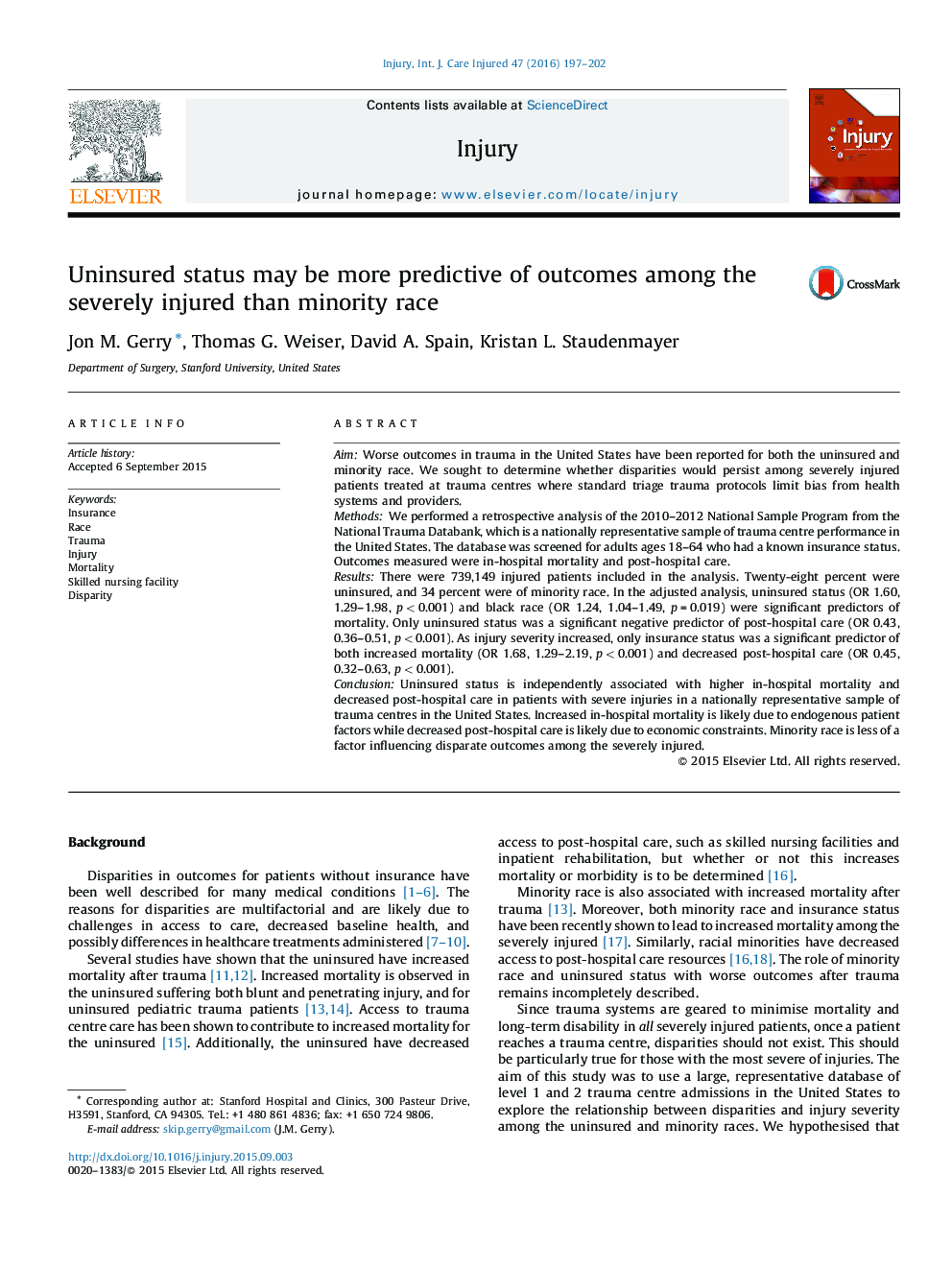| Article ID | Journal | Published Year | Pages | File Type |
|---|---|---|---|---|
| 6082929 | Injury | 2016 | 6 Pages |
AimWorse outcomes in trauma in the United States have been reported for both the uninsured and minority race. We sought to determine whether disparities would persist among severely injured patients treated at trauma centres where standard triage trauma protocols limit bias from health systems and providers.MethodsWe performed a retrospective analysis of the 2010-2012 National Sample Program from the National Trauma Databank, which is a nationally representative sample of trauma centre performance in the United States. The database was screened for adults ages 18-64 who had a known insurance status. Outcomes measured were in-hospital mortality and post-hospital care.ResultsThere were 739,149 injured patients included in the analysis. Twenty-eight percent were uninsured, and 34 percent were of minority race. In the adjusted analysis, uninsured status (OR 1.60, 1.29-1.98, p < 0.001) and black race (OR 1.24, 1.04-1.49, p = 0.019) were significant predictors of mortality. Only uninsured status was a significant negative predictor of post-hospital care (OR 0.43, 0.36-0.51, p < 0.001). As injury severity increased, only insurance status was a significant predictor of both increased mortality (OR 1.68, 1.29-2.19, p < 0.001) and decreased post-hospital care (OR 0.45, 0.32-0.63, p < 0.001).ConclusionUninsured status is independently associated with higher in-hospital mortality and decreased post-hospital care in patients with severe injuries in a nationally representative sample of trauma centres in the United States. Increased in-hospital mortality is likely due to endogenous patient factors while decreased post-hospital care is likely due to economic constraints. Minority race is less of a factor influencing disparate outcomes among the severely injured.
